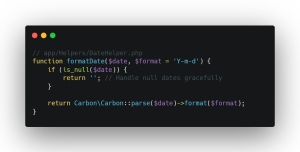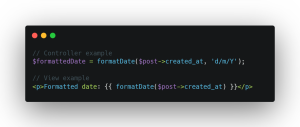A helper function is a reusable block of code that performs a specific task or set of tasks within a program. They are designed to:
- Improve Code Readability: By giving a descriptive name to a small, well-defined function, you make your code easier to understand for yourself and others. Instead of having complex logic scattered throughout your code, you can encapsulate it in a helper function with a clear purpose.
- Reduce Code Duplication: If you find yourself writing the same code multiple times in different parts of your program, that’s a prime candidate to be turned into a helper function. This reduces redundancy and makes your code more concise.
- Promote Maintainability: When you need to modify a common functionality, you only need to change it in one place – the helper function. This makes your code easier to maintain and update in the long run.
Helper functions can be used in various programming languages, and the way you create and use them can differ slightly. Here’s a general breakdown:
- Defining the Helper Function: You typically define a helper function as a named function that takes input parameters (if needed) and returns a value or performs an action.
- Making the Helper Function Available: Depending on the programming language and project structure, you might need to store helper functions in a specific location or include them using a specific mechanism so they can be called from other parts of your code.
- Using the Helper Function: Once defined and accessible, you can call the helper function from anywhere in your code where you need its functionality. Simply provide the required input values (if any) when calling the function.
By following these principles, you can effectively leverage helper functions to write cleaner, more maintainable, and easier-to-understand code.
Creating Helper Files
Laravel offers several approaches to create and organize your helper functions:
1) app/Helpers Directory:
- The most common location.
- Create a new PHP file within app/Helpers (e.g., StringHelper.php).
- Define your helper functions inside this file.

2) app/Http/helpers.php File:
- Suitable for smaller helper functions specific to controllers within the app/Http directory.
- Create a helpers.php file inside app/Http.
- Register the file in your composer.json using the autoload section:

Important: Run composer dump-autoload after making changes to composer.json.
3) Custom Locations and Service Providers:
- For more complex organizations or sharing helpers with packages, consider custom locations and service providers (beyond the scope of this basic guide).
Making Helpers Available
Once you’ve created your helper file, Laravel automatically loads functions defined within the app/Helpers directory. For helpers in other locations, you might need to register them using Composer’s autoload or a custom service provider approach.
Using Helper Functions
Helper functions can be called from anywhere in your Laravel application, including controllers, models, views, and even other helper functions. Simply use the function name:

Additional Considerations
- Naming Conventions: Use descriptive names that reflect the function’s purpose (e.g., truncateString). Consider prefixes for better organization (e.g., str_truncateString).
- Function Arguments: Allow for flexibility by accepting arguments or using default values.
- Error Handling: Implement error handling mechanisms if necessary to ensure robust helper behaviour.
- Testing: Write unit tests to verify the functionality of your helper functions.
Example: Creating a Helper for Date Formatting

Usage:

By effectively creating and utilizing PHP helpers in your Laravel project, you can streamline your development process, improve code maintainability, and make your application more modular and reusable.










